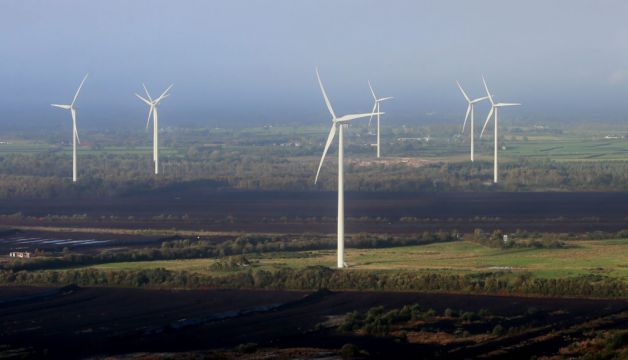Urgent implementation of all climate plans and policies, plus further new measures, are needed for Ireland to meet a 51 per cent emissions reduction target by 2030, the Environmental Protection Agency (EPA) has said.
In a new report, the EPA said total greenhouse emissions are estimated to have increased by 6 per cent in 2021.
The EPA said that data shows that planned climate policies and measures, if fully implemented, could deliver up to 28 per cent (4 per cent per annum) emissions reduction up to 2030.
This would indicate that Ireland could only comply with its 2030 EU emissions reduction target if all committed measures were implemented and delivered as planned and with full use of the permitted flexibilities.
Laura Burke, director general of the EPA, said: “These projections show the scale of policy development and implementation needed to match the ambition of our Climate Act 2021 and Carbon Budget targets.
“There is a significant gap between the ambition in the Climate Act and the realisation of the necessary actions to deliver on that ambition.
“The data shows that a step-up in both the implementation of actions already set out in plans and policies and the identification of new measures is needed.
“All sectors have work to do, in particular the agriculture sector.
“As the largest contributor of national emissions, more clarity is needed on how and when it will implement actions to reduce methane within the ever-shortening timeframe to 2030.”
EPA projections include:
- Total greenhouse gas emissions are estimated to have increased by 6 per cent in 2021.
- Ireland can comply with its 2030 EU emissions reduction target only if all planned measures are implemented and delivered as planned.
- The data projects that all sectors need to do significantly more to meet their 2030 national emissions reduction targets.
- The challenge is particularly evident in the agriculture sector. Methane emissions will need to reduce by up to 30 per cent to meet the lower range of its 2021 Climate Action Plan target.
The projections indicate that Ireland has returned to pre-pandemic levels of activity, particularly in the transport sector, with associated levels of emissions.
The EPA said this is likely to have been exacerbated by a return to higher levels of coal used in electricity generation to meet growing national energy demand and geopolitical impacts on energy.
In agriculture, under the existing measures scenario emissions are projected to increase by 1.9 per cent over the 2020-2030 period. A methane emissions reduction of almost 30 per cent is required to achieve a 22 per cent reduction in agriculture emissions compared to 2018, as committed to in the 2021 Climate Action Plan.
The EPA said the sector must clearly set out how this will be achieved to address uncertainty regarding its ability to deliver even the lower end of the range of its sectoral targets within the timeframe to 2030.
Stephen Treacy, EPA senior manager, said: “The message from the authors of the recent IPCC report on climate mitigation was clear – it’s now or never, if we want to limit global warming to 1.5 degrees Celsius.

“Without immediate and deep emissions reductions across all sectors, it will be impossible.
“In Ireland, implementation of measures has consistently lagged far behind planning. It is important that all planned actions are implemented as soon as possible while, in parallel, identifying actions to address the remaining gap to meet carbon budget limits.”
The EPA is the national body with responsibility to develop, prepare and publish projections of greenhouse gas emissions for Ireland. The EPA produces national greenhouse gas emission projections on an annual basis.







